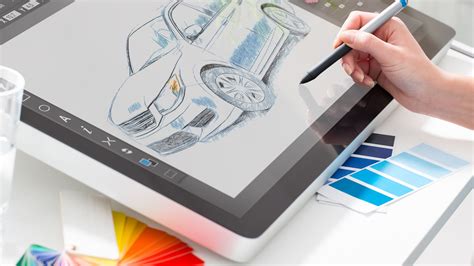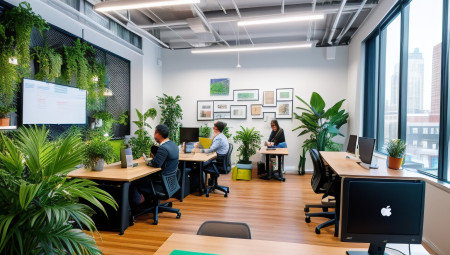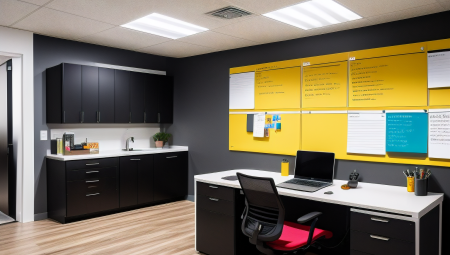Are you passionate about creativity and innovation? Do you have a keen interest in the intersection of art and technology? If so, you may find a career in industrial design to be both challenging and rewarding. Industrial designers play a crucial role in shaping the products and technologies that surround us, from the smartphone in your pocket to the furniture in your home. In this blog post, we will explore the dynamic field of industrial design and its evolving relationship with technology. From understanding the role of industrial designers to incorporating artistic principles and using virtual reality in the design process, we will delve into the diverse aspects of this exciting profession. Join us as we examine the impact of technology on industrial design, the future of 3D printing, and the challenges and opportunities faced by industrial designers in the digital era. Whether you’re a seasoned professional or a budding design enthusiast, this post will provide valuable insights into the fascinating world of technological product design.
Table of Contents
Understanding the role of industrial designers
Industrial designers play a crucial role in the creation of products that are both aesthetically appealing and functional. Their work involves integrating art, science, and technology to develop innovative and user-friendly designs for a wide range of products.
By utilizing their skills in design, materials, and manufacturing processes, industrial designers are able to translate ideas into tangible products that meet the needs and desires of users. They work closely with engineers, marketers, and other professionals to ensure that the final product not only looks great but also functions as intended.
Industrial designers must have a deep understanding of human behavior and preferences to create designs that resonate with users. They often conduct extensive research and user testing to gather insights that inform their design decisions and ensure that the end product meets the needs of its target audience.
In addition to their technical and artistic skills, industrial designers also need to stay updated with the latest trends in technology, materials, and manufacturing processes. This enables them to adapt to changes in the industry and continue creating innovative and sustainable designs that make a positive impact on the world.
Exploring the impact of technology on industrial design
Industrial design has undergone a significant transformation with the advent of technology. The integration of advanced tools and software has revolutionized the way products are conceptualized, designed, and produced.
One of the major impacts of technology on industrial design is the ability to create innovative and complex designs that were once deemed impossible. With the help of computer-aided design (CAD) software, designers can now visualize, prototype, and iterate their ideas with precision and efficiency.
Moreover, the influence of 3D printing technology has opened up new possibilities in industrial design. This additive manufacturing process allows for the creation of intricate and customized parts, leading to greater design flexibility and optimization of product performance.
Another significant impact of technology on industrial design is the focus on sustainability. With the rise of eco-friendly materials, energy-efficient processes, and recyclable components, designers are now able to create products that align with environmental and social responsibility.
Incorporating artistic principles in industrial design
Industrial design is not just about creating functional products; it’s also about incorporating artistic principles to make those products visually appealing and emotionally engaging. The role of industrial designers in incorporating artistic principles is crucial, as they are responsible for creating products that not only serve a purpose but also stand out in terms of aesthetics.
When it comes to incorporating artistic principles in industrial design, it’s important to consider the visual elements such as shape, color, and texture. These elements can greatly influence the overall aesthetic appeal of a product and make it more attractive to consumers.
Another artistic principle that plays a significant role in industrial design is balance and proportion. Industrial designers carefully consider the balance of elements within a product to ensure that it looks visually pleasing and is also functional.
Furthermore, industrial designers often draw inspiration from various artistic movements and styles, such as Art Deco, Minimalism, or Bauhaus, to infuse their designs with unique artistic qualities. By incorporating these artistic principles, industrial designers can create products that not only serve a purpose but also make a strong artistic statement.
Using virtual reality in the industrial design process
Incorporating virtual reality (VR) technology into the industrial design process has revolutionized the way designers conceptualize, create, and evaluate products. With VR, designers are able to immerse themselves in a virtual environment that allows them to interact with their designs in ways that were not previously possible. This technology has opened up a whole new realm of possibilities for collaboration and innovation in the industrial design field.
One of the key benefits of using VR in industrial design is the ability to prototype and test products in a virtual space before moving to physical production. This not only saves time and money, but it also allows for more experimentation and iteration in the design phase. Designers can make real-time adjustments to their creations and see the immediate impact of those changes, leading to more refined and successful end products.
Another advantage of incorporating VR into industrial design is the enhanced presentation of designs to clients and stakeholders. Instead of relying on 2D renderings or physical models, designers can create immersive experiences that allow others to fully understand the vision behind a product. This can lead to more effective communication and decision-making throughout the design process.
As VR technology continues to advance, the possibilities for its application in industrial design are only growing. From ergonomics testing to virtual assembly, designers are finding new ways to leverage VR to optimize the entire design process. With the seamless integration of virtual reality, the future of industrial design is looking more innovative and exciting than ever.
Enhancing user experience through technology-infused design
Technology has revolutionized the way products are designed and manufactured, leading to a major shift in the industrial design landscape. The integration of cutting-edge technologies into the design process has opened up new possibilities for enhancing user experience. Industrial designers are now leveraging technologies such as augmented reality, artificial intelligence, and interactive interfaces to create products that are not only visually appealing but also functionally superior.
By harnessing the power of virtual reality and augmented reality, industrial designers are able to provide users with immersive experiences that enable them to interact with products in unprecedented ways. This technology-infused approach to design allows for a deeper understanding of user needs and preferences, ultimately resulting in products that are more intuitive and user-friendly.
Furthermore, the use of artificial intelligence in industrial design has enabled the development of smart products that can adapt to users’ behavior and preferences. From personalized interfaces to predictive analytics, AI has fundamentally transformed the way products are designed to cater to the unique needs of each user, thereby enhancing the overall user experience.
As technology continues to advance at a rapid pace, the role of industrial designers in enhancing user experience through technology-infused design will become increasingly vital. It is imperative for designers to stay abreast of the latest technological advancements and to continuously explore innovative ways to integrate technology into the design process in order to create products that not only meet user needs but also exceed their expectations.
The future of 3D printing and its influence on industrial design
As we look towards the future of industrial design, one technology stands out for its potential to revolutionize the field: 3D printing. This innovative process, also known as additive manufacturing, has already begun to make a significant impact on the way products are designed, prototyped, and manufactured.
The use of 3D printing in industrial design allows for greater flexibility and creativity in the development of new products. Designers are no longer limited by traditional manufacturing constraints, as the technology enables the production of complex shapes and structures that were previously unattainable.
Furthermore, the influence of 3D printing extends beyond just the design phase. It has the potential to revolutionize supply chains and manufacturing processes, leading to more sustainable and efficient production methods.
As 3D printing continues to advance and become more widely accessible, industrial designers will need to adapt their skills and approach to fully leverage the capabilities of this technology.
Balancing form and function in technological product design
When it comes to technological product design, the balance between form and function is crucial. Aesthetics and usability must work together seamlessly in order to create a successful product. Finding this balance requires a deep understanding of both the user’s needs and the potential of technology.
In today’s digital era, consumers not only want products that work well, but also ones that are visually appealing and innovative. This puts pressure on industrial designers to create products that not only fulfill their intended purpose, but also stand out in a crowded market.
One example of successful balancing of form and function in technological product design is the smartphone. These devices are not only functional, but have become fashion statements, with sleek designs and advanced features. The challenge for industrial designers is to constantly innovate and find new ways to strike this balance in a rapidly evolving technological landscape.
Overall, finding the perfect balance between form and function in technological product design is an ongoing challenge, but it is also what drives innovation in the industry. As technology continues to advance, industrial designers must adapt and find new ways to create products that are both functional and visually compelling.
The role of industrial designers in creating sustainable products
Industrial designers play a crucial role in creating sustainable products by integrating environmentally friendly materials and manufacturing processes into their designs. By prioritizing sustainability, designers can help reduce the environmental impact of the products they create, leading to a more eco-friendly and responsible approach to industrial design.
Furthermore, industrial designers are responsible for finding innovative ways to minimize waste and optimize energy efficiency in the production and use of their products. Through their expertise in materials and manufacturing processes, designers can develop products that are not only durable and functional, but also environmentally friendly and resource-efficient.
In addition, industrial designers can collaborate with other professionals, such as engineers and environmental scientists, to ensure that the sustainable principles are incorporated into the entire product development lifecycle. By working in multidisciplinary teams, designers can bring together diverse expertise to create products that are both sustainable and technologically advanced.
Ultimately, the role of industrial designers in creating sustainable products is to lead the way in designing for a more sustainable future. By embracing sustainable design principles and leveraging their skills and knowledge, designers can make a significant impact in reducing the environmental footprint of the products we use on a daily basis.
Case studies of successful technology-driven industrial designs
Industrial design has seen a significant shift towards technology-driven solutions in recent years, with a number of successful case studies highlighting the impact of this trend. One such example is the development of the Tesla Model S, which incorporated cutting-edge battery technology to revolutionize the electric vehicle market. By utilizing advanced lithium-ion battery packs, Tesla was able to extend the range of their vehicles and enhance the overall performance, setting a new standard for sustainable transportation.
Another standout case study is the redesign of the Nest Learning Thermostat by industrial design firm Bould Design. This project involved integrating smart technology into a sleek and intuitive product, resulting in a user-friendly device that learns and adapts to the user’s preferences. The innovative use of sensors and connectivity has transformed the way consumers interact with their home heating systems, demonstrating the potential of technology-infused design in everyday products.
Furthermore, the collaboration between Nike and technology company, Astro Studios, resulted in the creation of the Nike+ FuelBand. This wearable fitness tracker combined industrial design with cutting-edge technology to provide users with real-time tracking of their physical activity and personalized feedback. The sleek and stylish design, coupled with advanced sensor technology, made the FuelBand a successful example of how industrial design can be enhanced through the integration of technology.
These case studies serve as a testament to the power of technology-driven industrial designs, showcasing how innovative use of technology can elevate products to new levels of performance, functionality, and desirability.
Challenges faced by industrial designers in the digital era
One of the major challenges faced by industrial designers in the digital era is the rapidly changing technological landscape. As technology continues to evolve at a fast pace, industrial designers are constantly challenged to keep up with the latest tools and software in order to remain competitive in the industry. This requires a significant amount of time and resources to stay updated with the latest advancements in technology.
Another challenge is the increasing demand for sustainable products. With the growing concern for the environment, industrial designers are under pressure to create products that are not only aesthetically pleasing and functional but also environmentally friendly. This poses a challenge as designers need to find ways to integrate sustainable materials and manufacturing processes into their designs without compromising on quality or cost.
Furthermore, the rise of 3D printing technology has also presented challenges for industrial designers. While 3D printing offers numerous advantages in terms of prototyping and manufacturing, it also requires a new set of skills and knowledge for designers to effectively utilize this technology. Designers need to be proficient in 3D modeling and printing techniques in order to fully exploit the potential of this technology.
Lastly, the digital era has brought about new challenges in terms of collaboration and communication. With the rise of remote work and virtual teams, industrial designers need to find effective ways to collaborate with team members and communicate their ideas across different platforms and devices. This requires strong communication skills and the ability to adapt to new collaborative tools and technologies.





